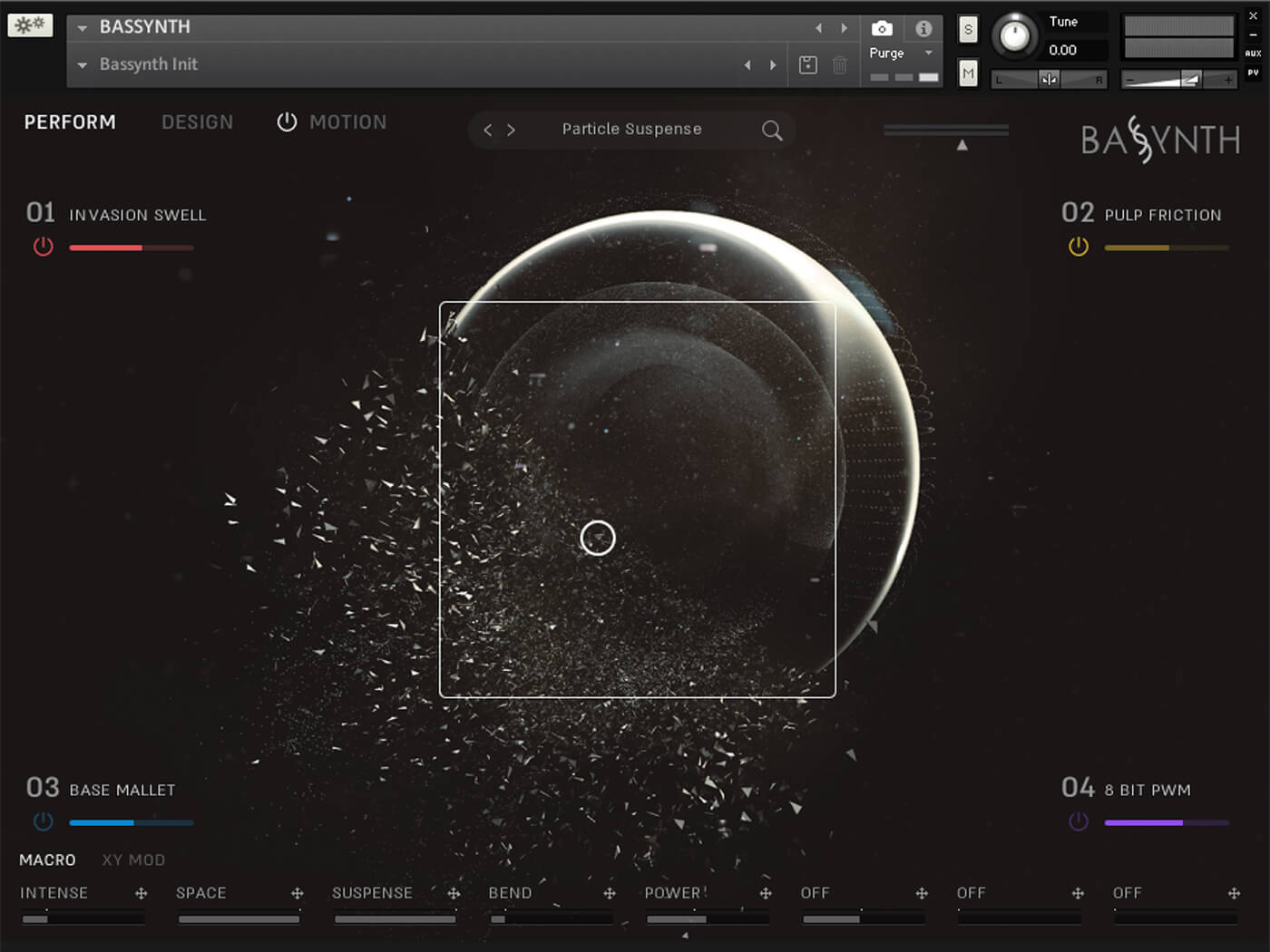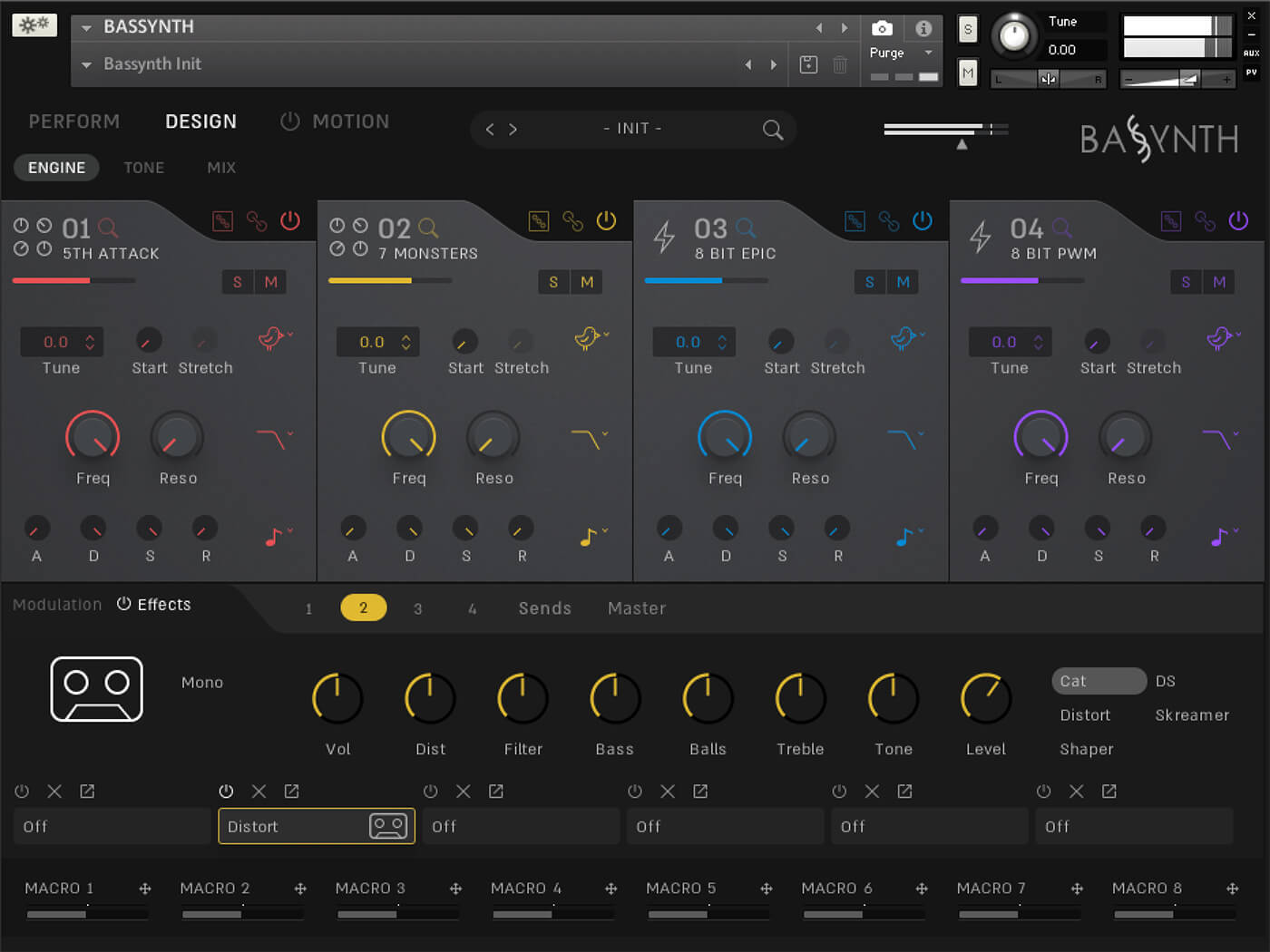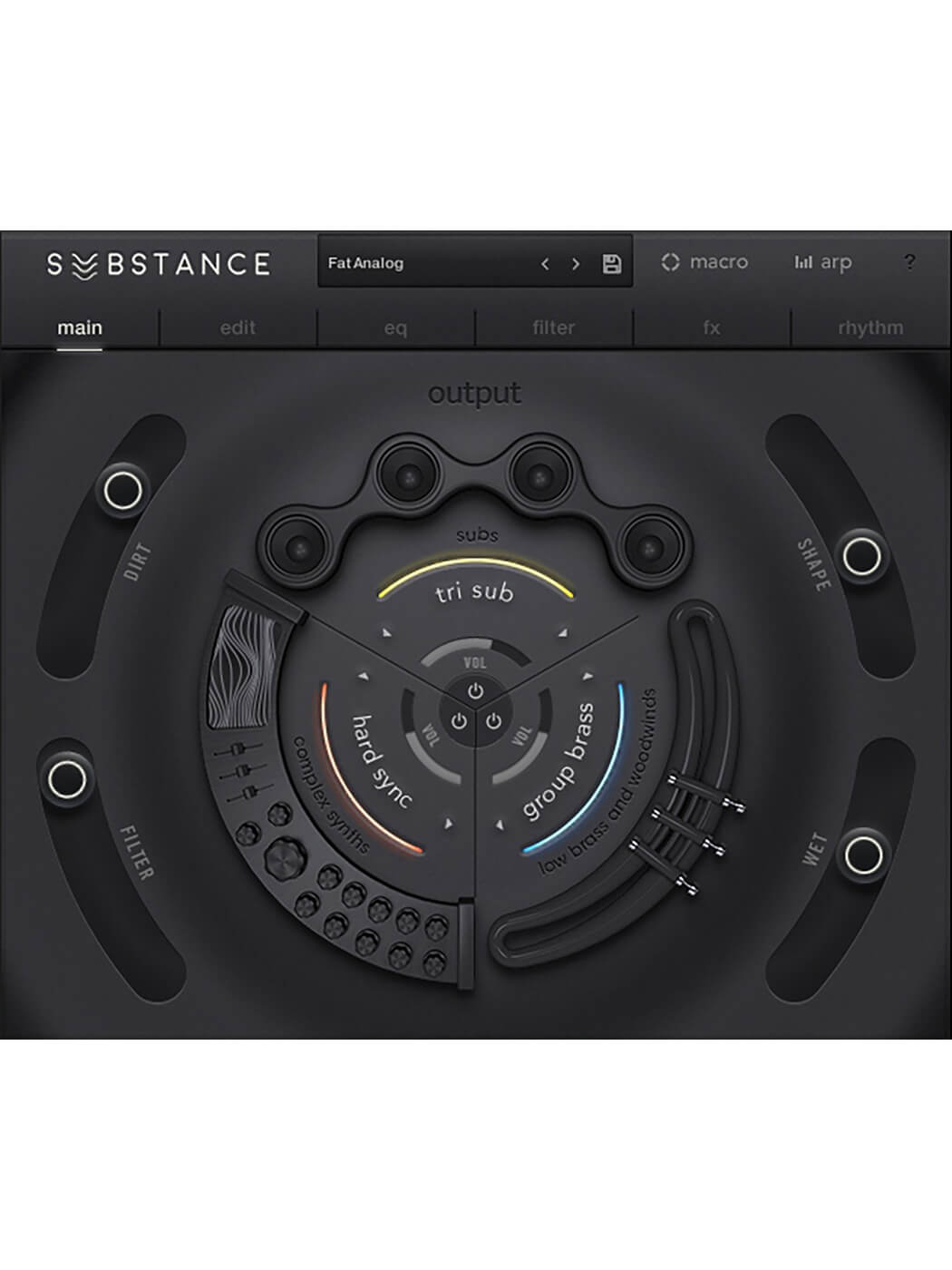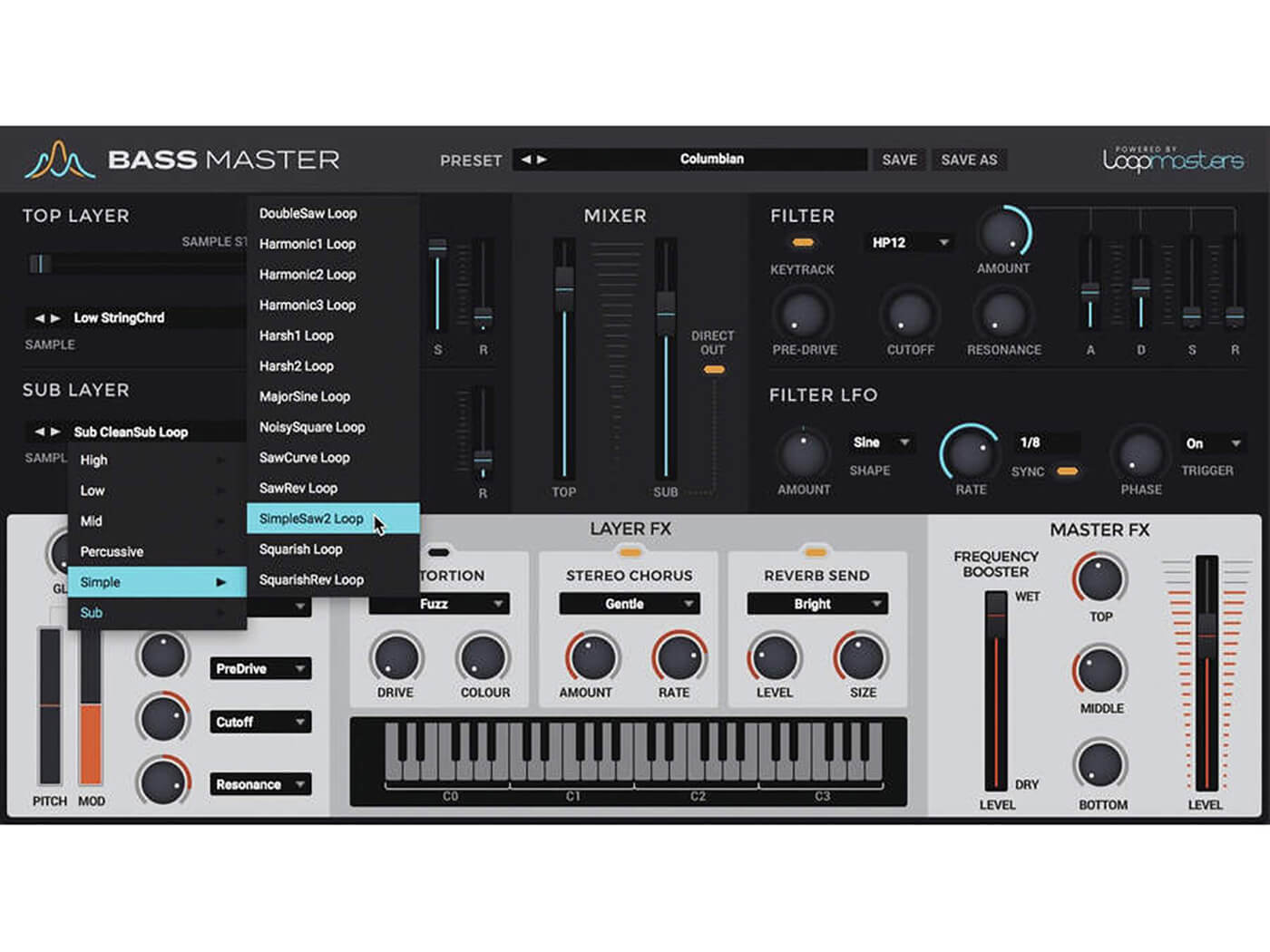Review: Wave Alchemy Bassynth
Can Wave Alchemy’s latest Kontakt release really be the last bass instrument you’ll ever need? Time to dive deep to find out.


Price £149
Contact Wave Alchemy
Wave Alchemy has been somewhat quiet over the last year, but with the release of Bassynth, it’s easy to see why. Its previous releases have championed sampling classic and futuristic electronic drums sounds with an obsessive attention to detail and for this new release, the team has gone deeper than ever, with over 11GB of samples captured from a huge range of synthesised, live and organic sources. The result is a highly flexible, four-layer Kontakt instrument ready to fulfill all of your bass needs, from dirty wavetable growls and cinematic brass swells to lively double bass plucks – potentially all at the same time!
Bass off
When you load the instrument into Kontakt 6 or the free Kontakt Player, you’re presented with the minimalist Perform page, which lists the four oscillators in each corner and has a large X/Y pad and eight macros at the bottom. There’s nothing to stop you simply flicking through the 290 presets using the well-tagged browser and interacting on a simple level with these controls to manipulate the timbre and character.
The sounds are consistently excellent with a broad range of familiar and exotic-sounding patches that cover most genres of modern and classic electronic music, also including cinematic sound design and processed live bass. Even if a patch isn’t quite to your liking, the flexibility is there to tweak and edit to make it your own by delving into the Design page.
Here, you can take control of each oscillator, starting by selecting from over 800 sources, including over 200 scannable wavetables. It’s a dizzying list that includes saturated 808s, throbbing subs, tight plucks, effected analogue oscillators, live brass, bass guitars, acoustic instruments, percussive hits, foley sounds, a large number of organic noise layers and more. If you’re interested, the full list of instruments and outboard equipment used is available on the Wave Alchemy website and it reads like a description of the best studio in heaven!
Once you’ve picked your sounds, you can shape them further using the Engine, Tone and Mix sub-pages, with each of the four sound sources having its own colour-coded voice section. There’s every control you’d expect, including the option of host-synced envelopes that use note values, modulatable sample start points, various voice modes including an Analog dial to add some subtle pitch variation and a fairly flexible filter.
The Tone page also features LoFi and Drive effects and an easy to use Smart EQ for basic tonal shaping. A particularly useful feature allows you to link the four voices so that you can adjust the filter and the amp envelopes at the same time, and you can also randomise the oscillator source selection to help with happy accidents.
If you choose a wavetable as a source, you get Position and Warp controls, with a nice 3D wavetable graphic if you hold shift and manipulate the Position dial, and additional options including 14 Warp modes to further shape the sound.
Complex movement
At the bottom of this page, you have the modulation section with three envelopes and four LFOs, plus velocity, key, aftertouch and pitch-bend sources, with fixed destinations for the Wavetables, Cutoff, Pitch, Volume and Pan. This offers plenty of sound-shaping possibilities, but it’s a shame you can’t modulate the macros, as this would have opened up much more of the instrument.
Speaking of which, those eight macros are present across all pages of the interface and each can be assigned to eight parameters to help add some complex movement to your sound, and can be further modulated using the third and final Motion page. This flexible 32-step sequencer has 36 preset patterns and 36 user pattern slots, with randomise functions, variable lengths and rates to help build more complex polyrhythms, and a Smooth function to smooth out the jumps between steps. A particularly nice touch is the Intensity slider, which acts as an overall control for the amount of influence the sequencer has.
This could be especially useful as a performance control, where you could do something like bring in a complex glitch at the end of a 16 bar phrase. Frustratingly, you can’t unlink the Motion Designer from the note playback, so you can’t modulate a phrase over a longer period of time unless you use overlapping MIDI notes.
The final piece of this bass-heavy puzzle is the extensive effects section. Each of the four voices can have up to six insert effects from a list of 20 that includes EQ, filter, bitcrush, distortion, transient, compressor, IR, chorus, flanger, several amp and speaker simulators and more. You also have six slots for Master effects, plus two Send effects. Given that some of the effects have multiple algorithms to choose from, it’s a whole lot of sound design on top of what’s already available with the oscillators themselves.

Deep impact
It’s amazing how much control has been squeezed out of Kontakt, with pretty much every useful parameter you can think of being covered, and more modulation sources than most are likely to need. The only offshoot of this is that the layout is spread across multiple pages and editing is a little more clunky than some other similar, non-Kontakt synths.
Programming can also be a little confusing at first, as trying to change any parameter that’s attached to a macro will pull up a floating macro editing window and you have to adjust the value from there. Like any instrument, though, a bit of time and patience helps the interface becomes more fluid, and we were able to create some especially lively, morphing acid patterns in no time.
Really though, the best thing about Bassynth is the vast collection of raw sounds themselves. There’s so much scope here for sound design that we could easily see this covering most of our bass needs, no matter the genre. It’s easy to get excellent, modern-sounding results, whether you’re after a resonant grime throb, distorted rock-bass lick, or a dissonant percussive tech pluck.
Bassynth works on several levels; If you want a collection of superb presets and simple performance controls then the Perform page can satisfy, or if you want to craft your own sounds using a mind-boggling collecting of sources and plenty of parameters then you can go in deep.
The result of having such a large amount of control, multiple layers and plenty of effects is that the final result offers up a wonderfully rich, dense and production-ready sound. Many of the presets show this off to good effect, providing powerful and usable pro sounds without resulting to unnecessary flashiness, making this a highly versatile bass tool.
Do I really need this?
It’s highly likely that you’ll have at least a couple of go-to synths or sample instruments that cover your bass needs. It’s unlikely though, that you have even a fraction of the hardware that has been deeply sampled in Bassynth’s 800 sources and wavetables. Each sound has been lovingly captured and processed, and the ability to layer different types of live, Foley and effects sound sources means the results are extremely rich and high quality.
It’s not especially cheap, but there’s enough depth and variety here to keep you coming back for a long time, and there are some useful additional features that add subtle variations to make the instrument feel more organic and alive. That said, although Bassynth can do more traditional live bass sounds, there are other, more realistic instruments that specialise in this area.
Key features
- 4-layer, multi-sampled bass instrument
- 11GB with 800+ sound sources
- Analogue synths, live instruments and Foley
- 290 modern-sounding presets
- Wavetable engine with 200 wavetables
- Filters, modulation and 40+ effects
- 8 macros plus X/Y pad
- 32-step Motion Designer
Alternatives

Substance is probably the closest thing you’ll get to Bassynth. It’s an excellent three-layer Kontakt instrument with a range of sources including analogue synths, live bass guitar and orchestral brass. However, Bassynth has more raw content, deeper editing and more macros.
Read our review here.

If you’re looking for something a little cheaper, then Bass Master may fit the bill. It has a sub layer and a top layer for crafting bass sounds, with more basic effects and editing. You can’t get the same depth of sound, but it comes with some superb dancefloor-ready presets and sound sources.
Read our review here.